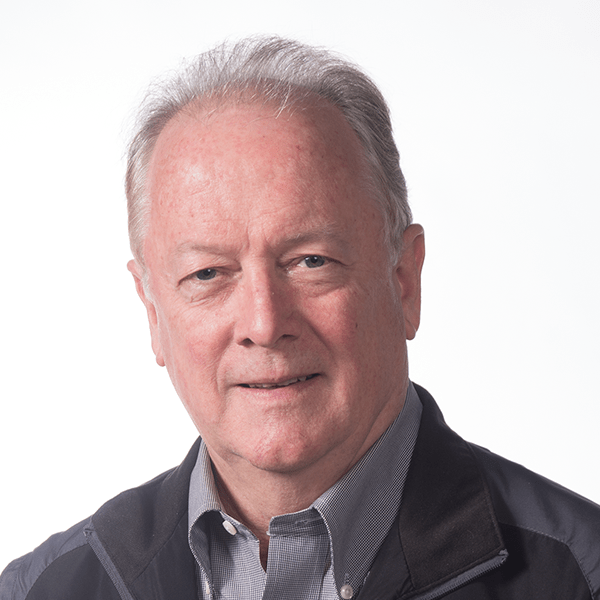
Richard Yelle discusses the history of NYEGW at Clayworks, including stories about Joe Upham, Bill Gudenrath, and Rose Slivka.
05:53Richard Yelle discusses the history of NYEGW at Clayworks, including stories about Joe Upham, Bill Gudenrath, and Rose Slivka. Oral history interview with Richard Yelle by Barb Elam, conducted via telephone, December 17, 2019, Bard Graduate Center. Clip length: 05:53.
Time stamp: 00:00
Clip 1: Richard Yelle discusses NYEGW’s history with Clayworks. Clip length: 02:15.
Richard Yelle: RISD was—I graduated in 1976, moved straight to New York, worked at the display company called KayCo. And, we were at actually 90, 91 Fifth Avenue, just above 14th Street. And we start [laughs] Joe’s [Upham] furnace in the basement of that building. It was hilarious, actually. But so, in 1978, we started with the New York State Craftsman’s Fair at the Coliseum in Columbus Circle. And the same year we did the Arts and Antique auction on Channel 13, which was very exciting. And then I discovered a arts organization called Clayworks Studio Workshop. And the two women that ran it were Rose Slivka, who was then the editor of Craft Horizons, and a woman named Susan Peterson. And I asked them if we could rent space in their facility at 4 Great Jones Street. And so this was 1978, they had 5,000 square feet with a gallery, living quarters, studio space. The entire basement was a clay studio and they had a very large gas kiln and they invited artists into working clay, non-glass—[non-]clay artists. So they did rent us a space, and we moved in, and the night we moved in, there was a fire and the, the ceramic kiln set the first floor on fire [laughs]. So the next day, Susan Peterson asked me if I wanted to be the director of Clayworks Studio Workshop. She’s—quote unquote, ‘You’re the person on deck.’ And so I took that, I took that job. So I was the director of the New York Experimental Glass Workshop [New York, New York, later Brooklyn, New York, now UrbanGlass, Brooklyn, New York] and Clayworks Studio Workshop at the same time, at 4 Great Jones Street.
Time stamp: 02:17
Clip 2: Richard Yelle talks about Joe Upham and NYEGW’s neon studio at 4 Great Jones Street. Clip length: 00:49.
Richard Yelle: Joe was living at 4 Great Jones Street in the back on the first floor, and that’s when we opened our neon studio. He single-handedly built the neon studio back there, where he was living. In hindsight, it sounds hilarious, but we were getting work done though. And, and that, that was the important thing. It was a great experience for me. I was living on Spring Street in a loft. I [laughs] couldn’t live at Clayworks Studio on Great Jones Street, although Great Jones Street, it’s probably beautiful now, it was—I wanna say an extension of the Bowery back in those days, so.
Time stamp: 03:09
Clip 3: Richard Yelle discusses art organizations opening at the same time as NYEGW. Clip length: 01:55.
Richard Yelle: At the time that New York Experimental Glass shop opened, almost literally at the same time, Art on the Beach opened, the New Museum, PS1, just above midtown, Franklin Furnace, Artists Space, Book Arts [Center for Book Arts], all opened in New York City. So it was a really interesting time for me, especially, because I went to all of these places every, every week. And then when the galleries started moving to Soho, I went to Soho, you know, and did the gallery run, so it was an incredible time in New York City. I found a new loft space, so I could do some of my own work. And my girlfriend and I rented a loft from a conceptual artist on Franklin Street in what’s now Tribeca. And his name was Dennis Oppenheim. And I—you’re probably familiar with his work. So Dennis bought this raw building—vacant building on Franklin Street, and he had this incredible penthouse on the top floor. And then a bunch of artists like me rented floors. There were two big lofts per floor. And we got to know Dennis very well, and he always hosted parties in, in his loft area, and it was a great place to live, but dangerous. It was just dangerous to go outside. That was kind of the problem. There wasn’t very much of anything in lower Manhattan. Soho was barely occupied except for artists.
Time stamp: 05:06
Clip 4: Richard Yelle discusses meeting Willem de Kooning at Rose Slivka’s house in the Hamptons. Clip length: 00:46.
Richard Yelle: I met a lot of Rose’s friends, and she used to invite some of us out to her house in the Hamptons. And I remember on one of those visits I—we got to go and visit with de Kooning, because his wife was one of her best friends. And I was sitting there with de Kooning and we were talking about, guess what? Glass. It turns out that he was a glass painter in Holland before he came over. So he—the conversation happened because he asked me what I did, and I said I was a glass painter. And, so then he told me that story.